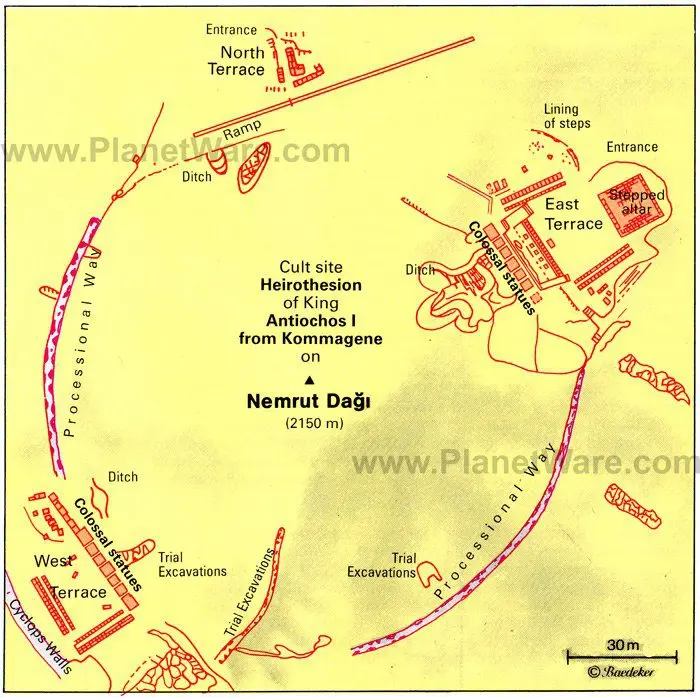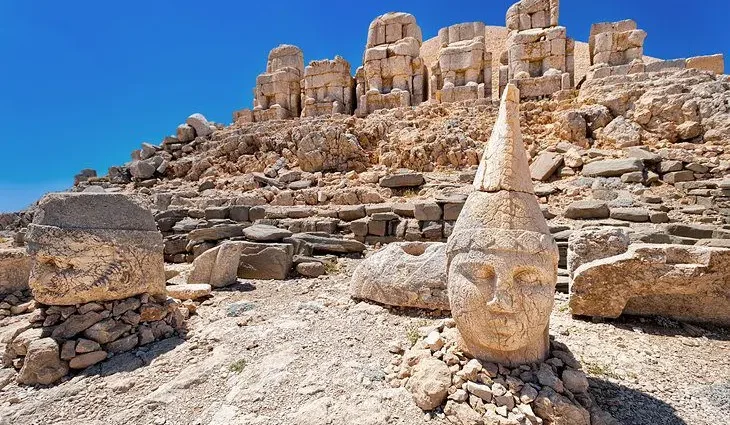Contents
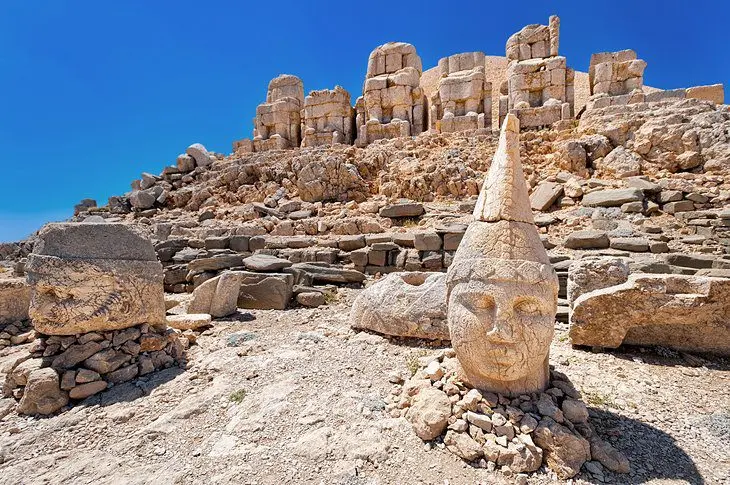
The summit of Mount Nemrut is home to one of Turkey’s most iconic sights. The funerary mound of King Antiochus I of the Kingdom of Commagene atop this 2,150-meter peak is one of the country’s UNESCO World Heritage sites and one of Turkey’s most fascinating and eerie ruins.
Under the 50-meter-high, man-made burial mound on the summit, Antiochus’ tomb is said to be concealed (though despite extensive archaeological work here, his tomb has never been found), but on top of the mound is one of eastern Turkey’s prime tourist attractions.
The spectacular funerary terraces rimming the summit’s funerary mound are littered with the toppled remnants of giant stone statues that were once majestically lined up to celebrate Antiochus’ own glory and the glory of the gods.
If you only have time for a short journey into eastern Turkey and have to pick one sight to see, Mount Nemrut can’t be beaten.
The mountain summit entrance is about 43 kilometers north from Kahta and 70 kilometers northwest from Adiyaman.
Most visitors time their visit for either sunrise or sunset to experience the true magic of the setting. But this is always the busiest time on the summit.
Note that due to snow closing the road to the summit, the mountain is only regularly accessible from around May to October. Also, be aware that from the summit car park to the funerary terraces, there is a 600-meter uphill walk.
History of Mount Nemrut
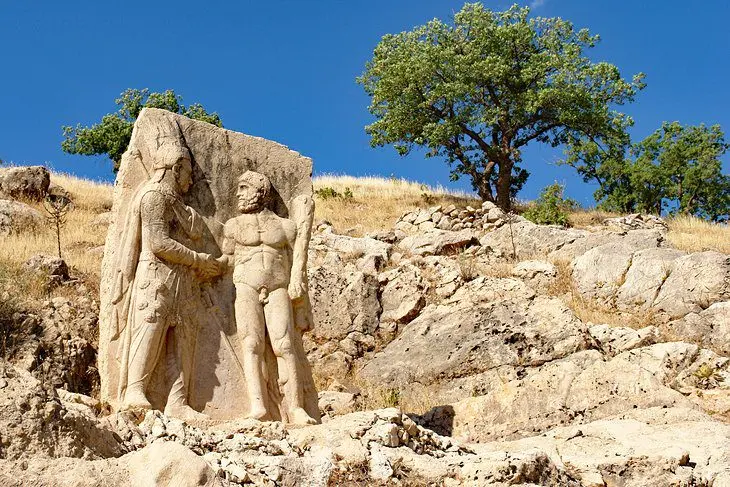
During the days of competing empires, the Commagene region found itself right in the borderlands between the Seleucid and later Roman Empires to the west and the Persian Empire to the east.
Formerly part of the Seleucid Empire, Commagene and its governor, Mithridates I, declared independence as the Seleucid Empire fell apart and the region became the Kingdom of Commagene.
When Mithridates I died in 64 BCE, his son Antiochus I claimed the crown and took his tiny kingdom’s independence further, signing treaties with both Rome and the Parthians.
It was actions such as these that led Antiochus to believe Commagene (and himself) to be more important than they actually were and eventually lead to the Romans launching military campaigns against him, though Rome wouldn’t succeed in absorbing the Kingdom of Commagene into their territory until 70 CE.
The Site
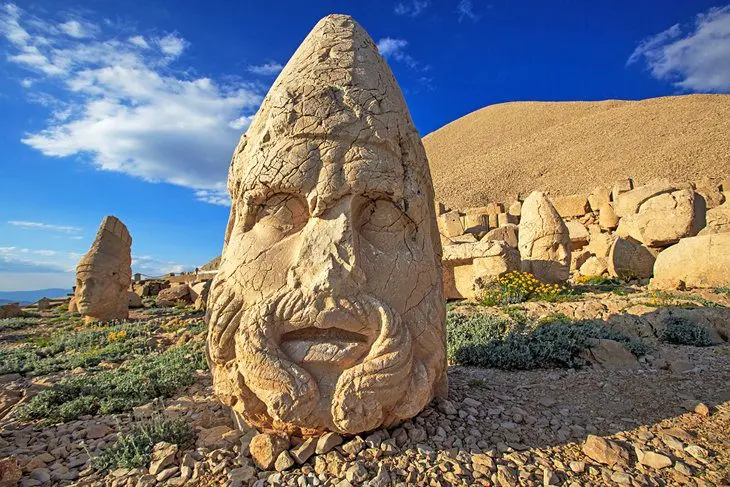
The most complete statuary are on the summit’s East Terrace, although the statues (between eight and 10 meters in height) have all lost their giant heads, which now sit incongruously on the ground beside the bodies. The colossal figures of the gods face the main altar.
In addition to eagle and lion representation, the Greco-Persian deities here are Zeus Oromasdes, Heracles-Verethragna-Artagnes-Ares, Apollo-Mithras-Helios-Hermes, and Commagene-Tyche. Antiochus I himself is represented here as well.
The statues are flanked by broken reliefs depicting Antiochus’ lineage. On the northern side, the relief shows his Persian (paternal) ancestors, while to the south, the relief shows his Seleucid (maternal) ancestors.
On the opposite side of the summit is the West Terrace. Most of the statues are less well preserved than those of the East Terrace, but their disembodied heads have not suffered the same fate and are wonderfully lifelike and conserved. Here, you can see the Lion Horoscope, with its astral motifs symbolizing the deification of Antiochus I through the metamorphosis of king into star.
The West Terrace reliefs are also well preserved and feature Antiochus I shaking hands with gods, including Apollo and Zeus.
Where to Stay near Mount Nemrut for Sightseeing
Adiyaman, Kahta, and Malatya are the nearest towns. Of the three, Kahta is the closest but Adiyaman (70 kilometers from Mount Nemrut) has the best selection of accommodation.
If you have a rental car, all three are a decent base from which to head to Mount Nemrut.
If you want to be closer, the tiny village of Karadut sits right at the foot of the mountain and has a range of small guesthouses, all of which offer sunrise tours and transport to the summit.
Alternatively, some visitors arrive on organized day trips from Şanlıurfa, though be aware this involves a very long day and a lot of driving.
- Adiyaman: The Hilton Garden Inn is a contemporary hotel, which offers the most modern accommodation for miles around with an outdoor pool; gym; sauna facilities; restaurant; and bright, minimalist-style rooms with city views.
- Karadut: Karadut Pansiyon is a family-run guesthouse just 10 kilometers from the summit. The rooms are basic but comfortable; breakfast is included (dinner and lunch can also be arranged), and staff here can organize transport and tours to the summit, as well as to the many other archaeological sites in the Mount Nemrut area.
More Related Articles on PlanetWare.com
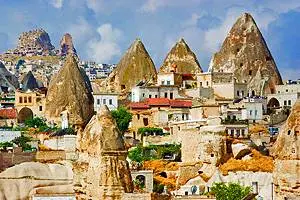
More Historic Monuments: Turkey is crammed full of renowned monuments from its far-reaching past. Head west to Cappadocia to check out the region’s famed Byzantine churches and monasteries carved into rock faces, then onto Konya, where the old Sufi dervish lodge is now the Mevlana Museum, home to the mausoleum of Sufi leader and poet Mevlana Rumi. Afterwards, head to Ankara, Turkey’s capital, to see the Atatürk Mausoleum, one of the country’s most important examples of mid 20th-century architecture.
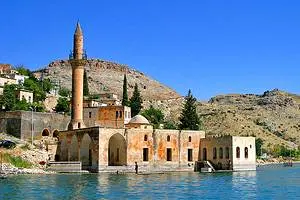
More of Turkey’s Southeast: To explore more of this fascinating, and lesser-seen, region of Turkey, head south to Sanliurfa, where castle remains sit atop a craggy hill overlooking important pilgrimage center mosques and the neolithic archaeological site of Göbeklitepe sits just outside town. Then head to Gaziantep, famed throughout Turkey for its local cuisine and home to one of the world’s most important mosaic museums.
